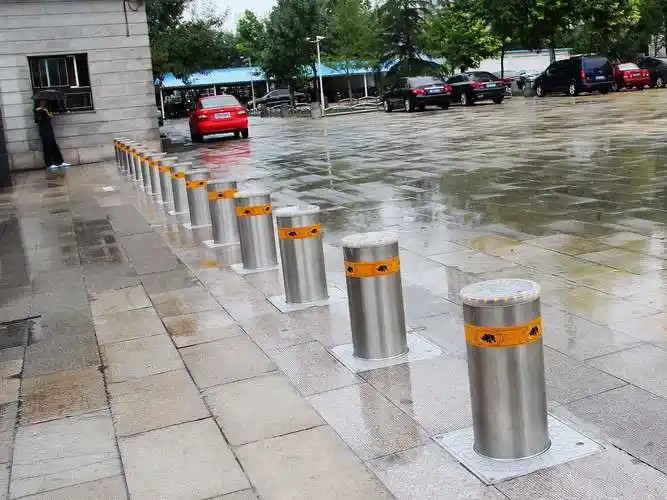0086-13924498389 info@qiruisafe.com
Pedestrian safety is paramount when using retractable bollards. The balance between access control and personal protection is key.
Here is a combination of strategies to prevent pedestrians from tripping over retractable bollards:
1. Design and Equipment Selection
High Color Difference: Bollards should be a color that contrasts sharply with the pavement (e.g., yellow or red bollards on gray asphalt). This makes them highly visible both day and night.
Integrated Lighting (LED): Many modern bollards have LEDs integrated into the top that glow red or amber when raised and often green or white when retracted. This light acts as a clear warning signal.
Wide, Flat Top: A design with a flat, larger diameter top (rather than a pointed one) is less likely to be a foot obstacle if someone inadvertently steps on it. It better distributes the potential impact.
Rounded Edges: Avoid sharp or angled edges that could catch a shoe's toe.
2. Signage and Delineation
Tactile Alert Paving: Install tactile alert paving tiles (with rounded grooves) at the entrances to the row of bollards. This system, crucial for people with visual impairments, alerts them to a change in the path and the presence of a potential obstacle.
Painted Lines: Paint a rectangle or continuous line on the ground that frames the area where the bollards are raised. This creates a visually defined "danger zone."
Vertical Signs: Place a small sign stating "Caution: Automatic Bollards" or using a universal pictogram of a pedestrian and an obstacle.
3. Operational and Behavioral Measures
Clear Operating Protocols: Personnel authorized to operate bollards must be trained to visually verify that the area is clear of pedestrians before activating them. Using surveillance cameras that cover all blind spots is essential.
Controlled Operating Speed: The ascent and descent speed must be slow enough to allow time to react if someone approaches unexpectedly, but fast enough to fulfill its security function.
Presence Sensors (Advanced Technology): High-end systems can incorporate:
Radar or Laser Sensors: These detect movement within a close radius and prevent the bollard from raising if someone is on top of it or very close, or they can even command it to retract immediately.
Weight/Pressure Sensors: These detect if an object or person is on the bollard and prevent its activation.
4. Education and Awareness
Clear Communication: In high-traffic public or private spaces, inform pedestrians about the presence of these devices through signage or, in the case of residential or employee associations, through circulars.
Pedestrian Flow Design: Integrate bollards into an overall design that naturally channels pedestrian flow away from them. For example, place them in the center of a narrow passageway or flank them with planters or barriers that force pedestrians to pass alongside them, not through them.
